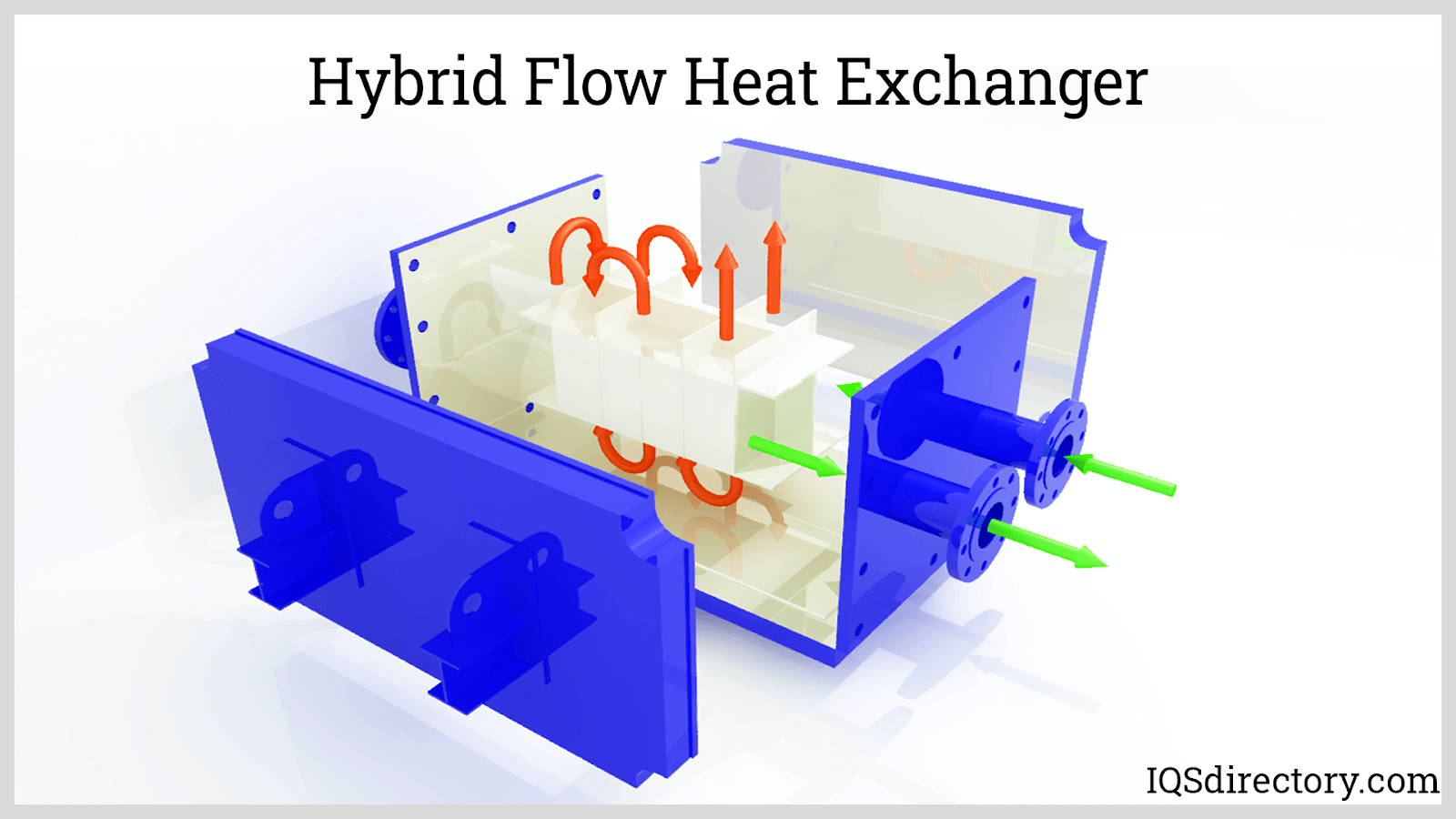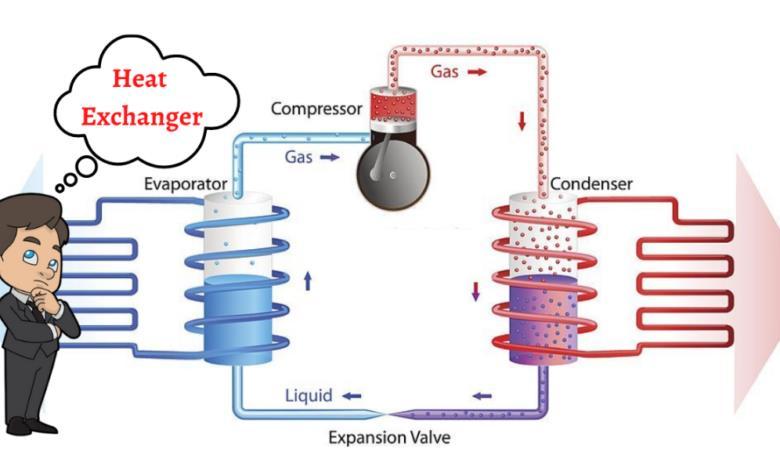Innovations in Heat Transfer Solutions: What You Need to Know for Ideal Efficiency
Technologies in Heat transfer systems are transforming performance throughout different industries. Advanced materials like graphene and nanofluids assure significant enhancements in thermal conductivity. The assimilation of IoT and machine understanding provides chances for real-time monitoring and improved energy performance. The landscape of thermal monitoring is swiftly developing. Understanding these growths is necessary for achieving suitable system performance and sustainability in the future. What details improvements are forming this improvement?
Emerging Products for Improved Heat Transfer

Advanced Heat Exchanger Styles
While traditional Heat exchangers have served their purpose in numerous applications, advanced designs are currently arising to satisfy the boosting needs for efficiency and performance. These innovative layouts, such as plate, shell-and-tube, and finned-tube Heat exchangers, integrate improved surface areas and enhanced circulation patterns to raise thermal transfer rates. Additionally, portable styles enable lowered room needs without compromising efficiency. Advanced products, such as composites and corrosion-resistant alloys, furthermore improve durability and efficiency under severe conditions. Furthermore, simulation technologies and computational fluid dynamics are increasingly utilized to improve these designs, guaranteeing peak Heat transfer characteristics. As industries look for to decrease power usage and optimize output, the fostering of advanced Heat exchanger styles is pivotal in accomplishing these objectives.
The Function of Nanotechnology in Heat Transfer
Nanotechnology plays an important function in boosting thermal conductivity within Heat transfer systems. By controling materials at the nanoscale, scientists have actually achieved substantial improvements in energy effectiveness. These improvements not only enhance efficiency but additionally add to even more lasting power remedies.
Improved Thermal Conductivity
Significant advancements in thermal conductivity have emerged via the application of nanotechnology, reinventing Heat transfer systems throughout various industries. By including nanoparticles right into Heat transfer fluids and materials, researchers have actually accomplished impressive rises in thermal conductivity. These nanoparticles, such as carbon nanotubes, graphene, and steel oxides, boost the Heat transfer residential or commercial properties because of their high surface and special thermal qualities. The resulting compounds exhibit improved performance in applications varying from electronic devices cooling down systems to renewable power technologies. Moreover, the ability to customize the size, form, and composition of nanoparticles allows for maximized thermal administration solutions. As a result, nanotechnology remains to play an essential function in the advancement of a lot more reliable and efficient Heat transfer systems, leading the way for enhanced industrial applications.
Power Effectiveness Improvements

Combination of IoT in Heat Transfer Systems
The assimilation of IoT in Heat transfer systems introduces the implementation of clever sensing units that enhance operational efficiency. These sensing units make it possible for real-time data monitoring, permitting immediate adjustments and optimizations. This technological improvement has the prospective to significantly enhance efficiency and power monitoring in Heat transfer applications.
Smart Sensors Implementation
As Heat transfer systems develop, the integration of smart sensors with the Net of Points (IoT) has actually arised as a transformative strategy. These sensing units make it possible for real-time surveillance of pressure, flow, and temperature level prices, enhancing system effectiveness and integrity. By accumulating and transmitting data, they facilitate positive maintenance, reducing the threat of system failures. Furthermore, smart sensors add to energy financial savings by refining operational criteria based upon ecological conditions. Their capacity to examine abnormalities and trends enables notified decision-making, ensuring peak performance of Heat transfer systems. As industries significantly embrace this innovation, the execution of wise sensors stands to reinvent how Heat transfer systems are handled, leading the means for better sustainability and boosted efficiency results.
Real-Time Information Surveillance
Exactly how can real-time information keeping an eye on boost the performance of Heat transfer systems? By integrating Net of Points (IoT) innovation, Heat transfer systems can utilize constant data collection from clever sensing units. This real-time tracking permits prompt evaluation of stress, temperature, and circulation rates, enabling operators to recognize inefficiencies quickly. As a result, changes can be made to optimize performance, decrease energy intake, and prolong tools life expectancy. Additionally, anticipating maintenance can be executed, lessening unforeseen downtime and costly repair work. The capacity to visualize efficiency metrics with dashboards enhances decision-making, fostering a positive method to system administration. Inevitably, real-time data keeping an eye on not just improves functional performance yet likewise adds to sustainability objectives within commercial procedures.
Energy Efficiency and Sustainability Trends
Energy performance and sustainability fads are reshaping the landscape of Heat transfer systems, read review driving innovation and compliance across numerous industries. Organizations are increasingly focusing on energy-efficient styles to decrease functional costs and reduce ecological impacts. The assimilation of renewable resource sources is becoming more common, allowing Heat transfer systems to run sustainably while satisfying regulatory needs. In addition, advancements in materials and modern technologies promote reduced power usage and boost total performance. Lifecycle assessments are additionally obtaining grip, permitting companies to evaluate the environmental impact of Heat transfer systems from production to disposal. This focus on sustainability not just sustains corporate obligation yet also positions companies competitively in a market where customers increasingly favor eco-friendly remedies. As a result, power performance and sustainability click for info continue to be essential factors to consider for future growths in Heat transfer innovation.
Developments in Thermal Management Solutions
While the need for efficient Heat transfer remains to rise, advancements in thermal monitoring remedies are arising to address both efficiency and sustainability challenges. Advanced products, such as phase modification products and nanofluids, are being developed to improve Heat transfer effectiveness - DVS Heat Transfer Systems. These materials boost thermal conductivity and permit for much better temperature guideline in different applications. Additionally, technologies like active thermal control systems are getting traction, making it possible for real-time modifications to take care of Heat flow effectively. These systems contribute to power savings and lower the environmental influence of thermal procedures. Moreover, the assimilation of IoT in thermal administration facilitates surveillance and predictive upkeep, ensuring maximized efficiency and long life of Heat transfer systems. In general, these innovations stand for substantial strides towards even more sustainable thermal administration techniques
Future Directions in Heat Transfer Innovation
Arising advancements in thermal monitoring options indicate an appealing future for Heat transfer modern technology. Scientists are increasingly concentrating on creating materials with exceptional thermal conductivity and improved energy efficiency. Technologies such as nanofluids, which include suspended nanoparticles, offer substantial improvements in Heat transfer efficiency. In addition, the integration of wise products that adjust to differing temperature level conditions is acquiring grip, permitting more responsive and efficient systems. The rise of additive manufacturing techniques is also allowing the layout of intricate Heat exchanger geometries that maximize liquid circulation. The implementation of maker discovering formulas is anticipated to revolutionize the optimization of Heat transfer systems, facilitating predictive upkeep and efficiency improvement. Jointly, these improvements are poised to change the landscape of Heat transfer technologies in various sectors.

Regularly Asked Inquiries

How Do I Select the Right Heat Transfer System for My Application?
Choosing the ideal Heat transfer system entails reviewing application needs, consisting of temperature level ranges, fluid buildings, and efficiency demands. Assessing system types, upkeep factors to consider, and cost-effectiveness additionally plays a necessary role in making an informed choice.
What Are the Upkeep Demands for Advanced Heat Exchangers?
Maintenance requirements for innovative Heat exchangers generally consist of regular examinations, keeping track of for leaks, cleansing of surface areas, and guaranteeing perfect flow rates. Adhering to manufacturer standards warranties effective operation and lengthens the devices's life expectancy.
How Do Ecological Factors Affect Heat Transfer Performance?
Ecological factors significantly influence Heat transfer effectiveness. Variants in moisture, airflow, and temperature level influence thermal conductivity and convective Heat transfer, eventually influencing system performance and demanding consideration during the design and procedure of Heat transfer systems.
What Security Requirements Relate To Heat Transfer Equipments?
Safety standards for Heat transfer systems usually include guidelines from organizations such as ASME and ASTM. DVS Heat Transfer Systems. These requirements address materials, style, and functional techniques to assure dependability, performance, and security versus dangers in numerous applications
Just How Can I Repair Typical Heat Transfer System Issues?
Repairing typical Heat transfer system concerns entails inspecting for leakages, making certain appropriate liquid circulation, inspecting insulation honesty, and validating temperature level differentials. Recognizing these check that aspects can aid keep system efficiency and avoid additional issues.
Nanotechnology plays a vital function in improving thermal conductivity within Heat transfer systems. Substantial developments in thermal conductivity have emerged through the application of nanotechnology, transforming Heat transfer systems across various industries. Innovations in thermal conductivity via nanotechnology have led the way for impressive renovations in energy efficiency within Heat transfer systems. Energy effectiveness and sustainability fads are reshaping the landscape of Heat transfer systems, driving advancement and conformity throughout various markets. The integration of IoT in thermal management promotes monitoring and predictive upkeep, making certain enhanced efficiency and long life of Heat transfer systems.